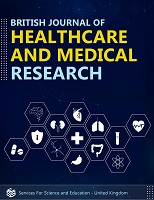Investigating Factors Influencing Low Levels of Utilisation of Antenatal Services Among Pregnant Women at Matero First Level Hospital - Lusaka District, Zambia
DOI:
https://doi.org/10.14738/bjhr.1203.18565Keywords:
Antenatal Care Services, Maternal and Child Health, utilization, ANC: Antenatal Care Services, AIDS: Acquired immune deficiency Syndrome, CBD: Central Business District, CSO: Central Statistics Office, FANC: Focused Antenatal Care, HIV: Human Immunodeficiency Virus, MCH: Maternal and Child Health, MDGs: Millennium Development Goals, MoH: Ministry of Health Zambia, MMR: Maternal mortality rat, UNICEF: United Nations Children’s Fun, WHO: World Health Organization, ZDHS: Zambia Demographic and Health SurveyAbstract
The study aim was to investigate factors influencing low levels of utilization of antenatal services among pregnant women at Matero first level hospital in Lusaka district of Zambia. Health care service utilization is a key proximate determinant of maternal and infant outcomes. It is evident that well-timed ANC utilization is an opportunity to prevent the direct cause of maternal and neonatal deaths related to obstetric complication and can improve certain outcomes of pregnancy complications. To date, the importance of maternal health care services in reducing maternal mortality and morbidity has received a significant recognition. However, implementing and assuring utilization of effective maternity care in the initial stages (Antenatal Period) for women in the developing world is not an easy task. A cross-sectional method was used whose target population were pregnant women in the child bearing age of between 15 years and 49 years. A simple random sampling was used to select participants for the study and 220 questionnaires were administered with the use of quantitative and descriptive methods. The findings were that 84% of the women met the WHO recommended visits of eight (8) and most of them were in the age group between 20 to 29 years at 51.4%. Furthermore, the results showed that 51% attained secondary education, while 33% of the women were running their private owned businesses and those who lived within the catchment area represented 57%. For transport to get to facility for the services 68% were using public buses. Most women were married representing 72% and 98% were Christians. 83.6% represents respondents who made adequate visits of 5 to 7 (the visits were adequate according to them). On the other hand, the study identified some major factors that contributed in the initial stages to low utilization of ANC services at the facility to be tradition, culture, attitude, environment of population (how big or small populations are in residential areas) representing 76.4%, long distances representing 15.0%, long ques at the hospital representing 4.6% as well as lack of transport representing 4.0%. In conclusion, results of this study indicate that 84% of the respondents utilize antenatal care services adequately at Matero level 1 hospital and this is mainly because the facility was upgraded to a level 1 hospital and as such it offers all ANC services.
Downloads
Published
How to Cite
Issue
Section
License
Copyright (c) 2025 Selina Naomi Kasikili

This work is licensed under a Creative Commons Attribution 4.0 International License.






